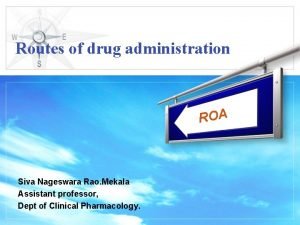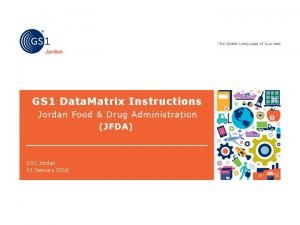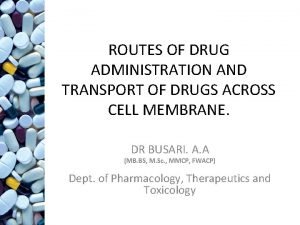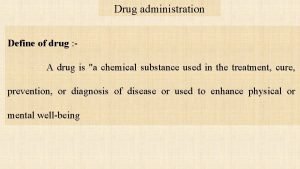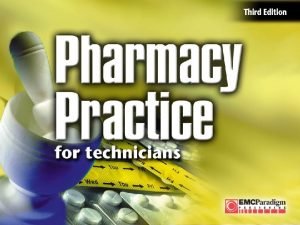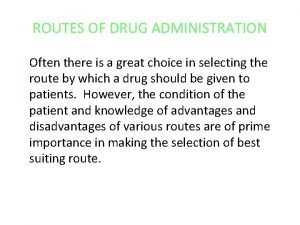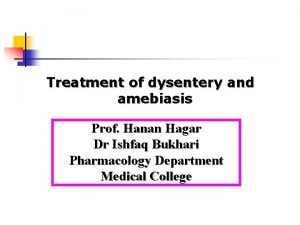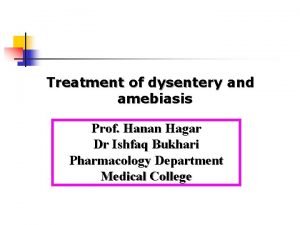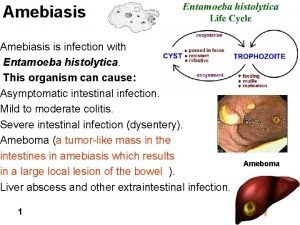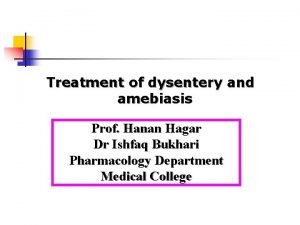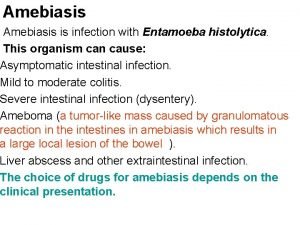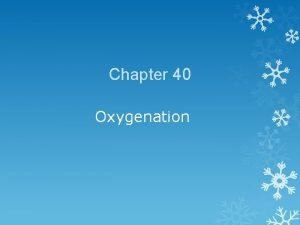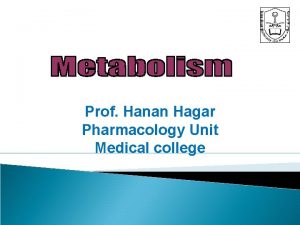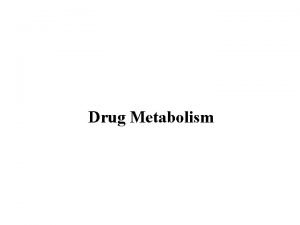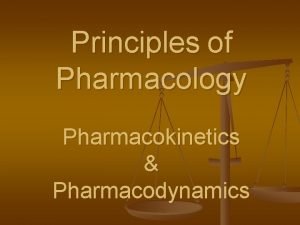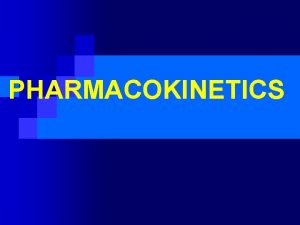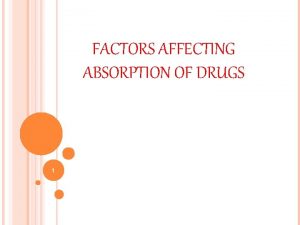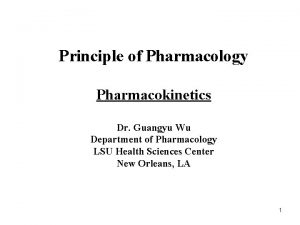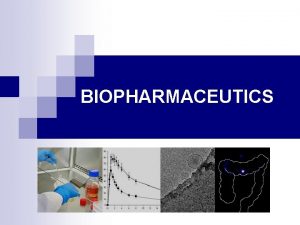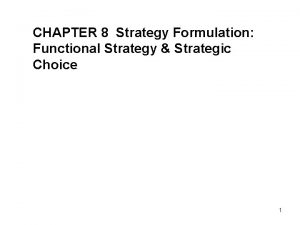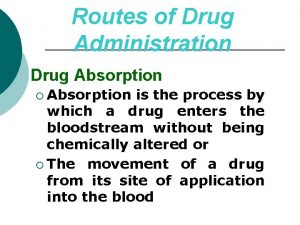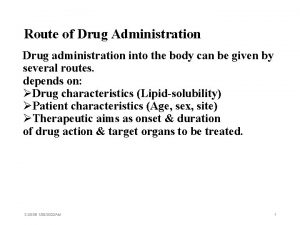Routes of Drug Administration Factors Deciding Choice of





































- Slides: 37

Routes of Drug Administration

Factors Deciding Choice of Route Type of described effect, systemic or local Physiochemical properties, solid or insoluble Rapidity of effect Quality of effect Condition of patient, conscious or unconscious, vomiting

Drug Administration Topical/Local Administration Mucus Membrane Skin Inhalation Systemic Administration Enteral Parenteral

Systemic Routes Enteral through GIT Orally Buccal or sublingual Rectal Parental Intravenous (IV) Intramuscular (IM) Subcutaneous (SC)

Enteral Route

Oral Administration Via mouth Tablets, capsules, powder, syrup, mixture suspension or emulsion

Advantages of oral route Convenience and patient comfort Safety, since medication can be retrieved in case of error or intentional overdose Economy, since there are few equipment cost

Disadvantages of oral route Slower onset of absorption and action Rate and degree of absorption vary with gastrointestinal contents and motility Some drugs destroyed by digestive fluids and must be administered by injection Cannot be used with nausea or vomiting Dangerous to use if patient has dysphagia, due to the possibility of aspiration

Cannot be used for unconscious patients Cannot be use for patients who should keep nil by oral

Absorption from stomach and upper intestine is affected by: Surface area Blood flow to site of absorption Physical state: solid, solution, suspension Water solubility Concentration at the site of absorption Rate of dissolution Rate of disintegration Particle size

Via Nasogastric tube/Gastric tube For the patients unable to swallow Advantages : ability to bypass mouth and pharynx when necessary , elimination of numerous injections Disadvantages: discomfort specially for the conscious patients

Buccal or sublingual Route Buccal – medication placed in the pouch between the cheek and the gum Sublingual – under the tongue Advantages: directly absorb to the circulation and rapid action Disadvantage: misunderstanding of the way of use

Rectal Route For the patients having nausea and vomiting or patients who are unable to swallow Advantages: bypassing the action of digestive enzymes Avoidance of irritation to the upper GI tract

Disadvantages of Rectal route Many medications are unavailable in suppository form Prolonged use of rectal suppositories can cause rectal irritation Absorption may be irregular or incomplete if feces are present Inconvenient & embarrassing Rectal inflammation occurs

Parenteral Administration

Parenteral Administration Intravenous Intramuscular Subcutaneous Intradermal Intrathecal Intraarterial Intra articular

Intravenous Route Drug administration directly to the vein Direct injection Bolus Infusion

Advantages of Intravenous Route Immediate effects Valuable for emergency use Suitable for large volume Complete bioavailability

Disadvantages of Intravenous Route Not suitable for oily solutions & insoluble substances Drug administered cannot be withdrawn Thrombophlebitis occurs at injection site Lack of sterility may cause viral hepatitis or AIDS Increased risk of adverse drug reactions Time and skill required for venipuncture

Difficulty of maintaining IV line Complications of IV therapy – bleeding, infection and fluid overload

Intramuscular Route ( IM) Injections of drugs into certain muscles Usually doses 3 ml or less IM injection Depot preparation Absorption depends upon rate of blood flow to the injection site Rapid action compared to SC route Slow releasing compared to IV route

Advantages : can be use to administer solutions or suspensions Slow, sustained effect from depot preparation Disadvantages: incorrect placement of the needle may damage blood vessels or nerves Pain Abscess formation Avoid during anticoagulant therapy

Subcutaneous Route (SC) Injection of drugs under the skin Use for highly soluble, non irritating, small volume of drug about 1 ml or less Absorption is slower and the drug action is generally longer with SC injections than with IV or IM injections Advantages : Slow absorption and distribution

Disadvantages: tissue damage, tissue necrosis and sterile abscess formation Only nonirritant drugs Not suitable for large volume

Intraarterial Route Direct injection into artery Localization of effect in particular tissue or organ Advantages: Diagnostics agents Disadvantages: Reserved route for experts

Intrathecal Route Injections into cerebrospinal fluid Blood Brain Barrier & Blood CSF Barrier slow drug entry into CNS Used when local and rapid effects of drugs on the meninges or cerebrospinal axis desired

Intradermal Route Injection into skin layers Uses: BCG, Small pox vaccination Testing drug sensitivity- Penicillin's Tuberculin test

Intraarticular Route Drug administration directly to the joint Usually local effect Uses: Rheumatology disorders

Topical Application- Mucous Membrane Conjunctiva, nasopharynx, oropharynx, vagina, urethra, urinary bladder, ear, nose, anal canal for local effects Ointment, cream, drops, jelly, powder, tablet, suppository, pessary, sprays, gargles

Topical Application- Skin Absorption depends on surface area of application, lipid solubility Few drugs readily penetrate skin Burned, denuded, abraded, inflammation increase systemic absorption Controlled- release topical patches

Advantages: Absorption rapid Only local effect Disadvantages: Toxicity by highly lipid soluble substances

Inhalation

Inhalation Via inhaler Via nebulizer Medication directly to the respiratory system

Advantages of Inhalation Rapid action of the drug, with local effects with in the respiratory tract Potent drugs may be given in small amounts, minimizing the side effects Convenience and comfort of the patient

Disadvantages of Inhalation Requires cooperation of the patient in proper breathing techniques for effectiveness Adverse systemic side effects may result rapidly because of extensive absorption capacity of the lungs Improperly administered or too frequently administered, inhalation can lead to irritation of the trachea or bronchi or bronchospasm

If not clean properly nebulizers can be a source of infection

Thank you….
 Factors affecting choice of route of drug administration
Factors affecting choice of route of drug administration Advantages and disadvantages of drugs
Advantages and disadvantages of drugs Penicicilin
Penicicilin Types of parenteral routes
Types of parenteral routes First pass effect in pharmacology
First pass effect in pharmacology Jordan food and drug administration
Jordan food and drug administration Non parenteral route of drug administration
Non parenteral route of drug administration Local route of drug administration
Local route of drug administration Drug administration definition
Drug administration definition Parenteral route
Parenteral route Mydriatics and miotics drugs
Mydriatics and miotics drugs Deliberate adulteration definition
Deliberate adulteration definition Drug of choice for extraluminal amoebiasis
Drug of choice for extraluminal amoebiasis Monilial diarrhoea
Monilial diarrhoea Drug of choice for extraluminal amoebiasis
Drug of choice for extraluminal amoebiasis Organism
Organism Drug of choice for extraluminal amoebiasis
Drug of choice for extraluminal amoebiasis Drug of choice for the treatment of extraluminal amebiasis
Drug of choice for the treatment of extraluminal amebiasis Good choice or bad choice
Good choice or bad choice Planning is deciding in advance what is to be done
Planning is deciding in advance what is to be done Deciding on the global marketing organization
Deciding on the global marketing organization Deciding to marry asl story
Deciding to marry asl story Consensual vs top down
Consensual vs top down Perencanaan menurut newman
Perencanaan menurut newman What was the sickening comic aspect
What was the sickening comic aspect Wages and salaries administration
Wages and salaries administration Write the factors affecting oxygenation
Write the factors affecting oxygenation Factors modifying drug action
Factors modifying drug action What is ion trapping in pharmacology
What is ion trapping in pharmacology Hagar conjugation
Hagar conjugation Factor affecting drug metabolism
Factor affecting drug metabolism Difference between pharmacodynamics and pharmacokinetics
Difference between pharmacodynamics and pharmacokinetics Factors affecting drug metabolism
Factors affecting drug metabolism Rate limiting steps in drug absorption
Rate limiting steps in drug absorption Systemic capillary fluid transfer
Systemic capillary fluid transfer Factor modifying drug action
Factor modifying drug action Factors affecting drug absorption biopharmaceutics
Factors affecting drug absorption biopharmaceutics Subjective factors in strategic choice
Subjective factors in strategic choice


